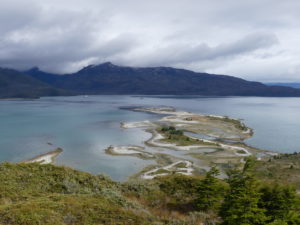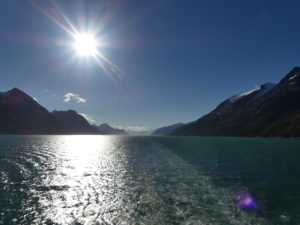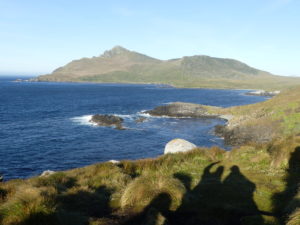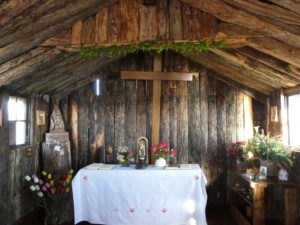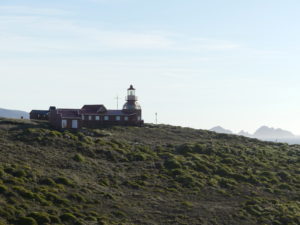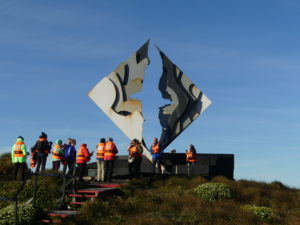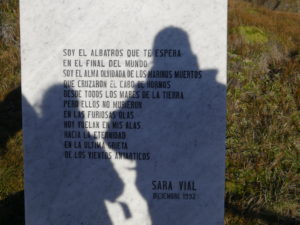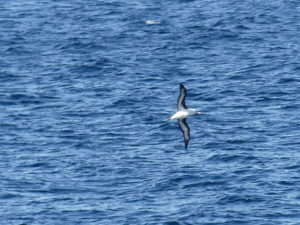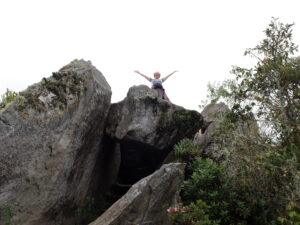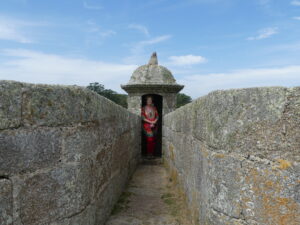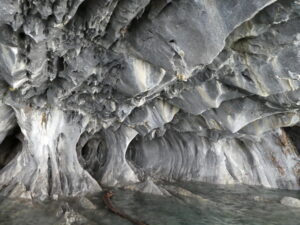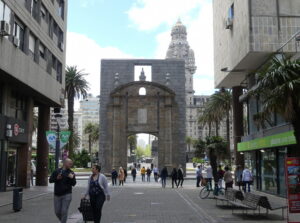We traveled the last leg of our trip by ship out of Punta Arenas through the Beagle Channel and the Straits of Magellan (the original passageway between the Atlantic and Pacific Oceans). Our days on board were filled with breathtaking vistas at the end of hikes, languorously long fjords, close-up wildlife and glistening glaciers.
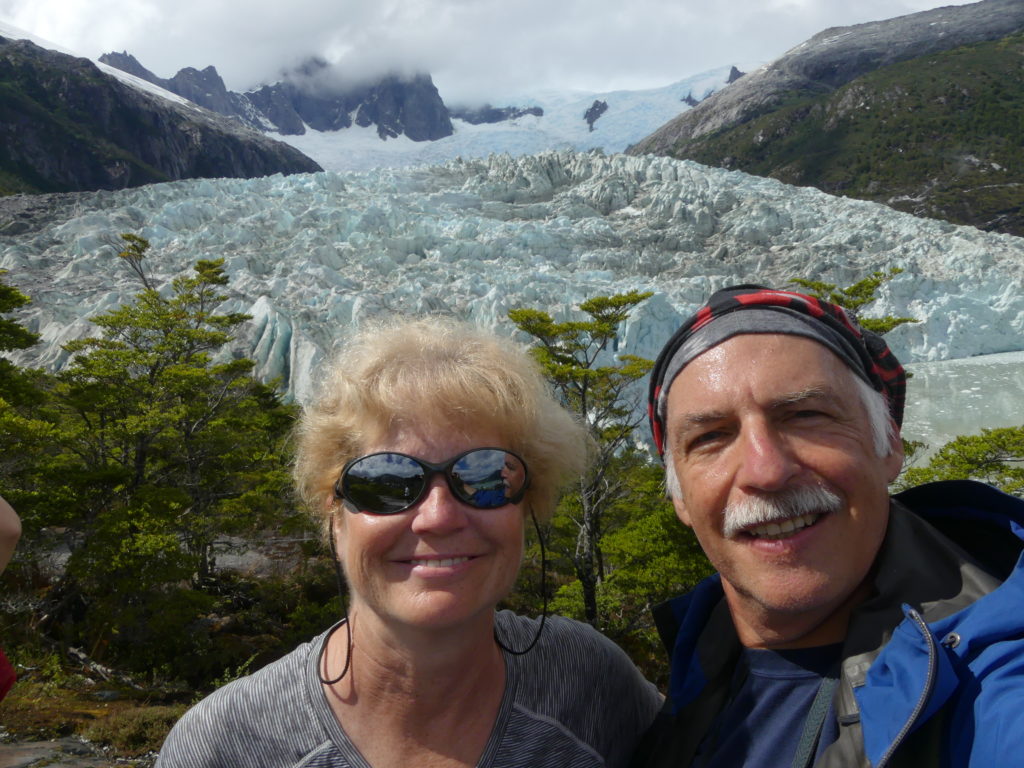
And we reached the end of the world at unusually placid Cape Horn, whose hazardous rounding was the way to cross between the oceans.
And we completed the long journey in Ushuaia, Argentina, about a dozen years earlier after our incomparable trip to Antarctica, South Georgia and the Falklands. The town had grown much larger on tourism, but had lost some of that small town charm we enjoyed back then.
Our overall journey through this gorgeous mountain landscape and desert pampas had begun far north at Puerto Montt, Chile. We spent nearly a month driving and ferrying along three thousand kilometers, from north to south.
TIERRA DEL FUEGO – VIA STRAITS OF MAGELLAN AND BEAGLE CHANNEL
LANDSCAPE
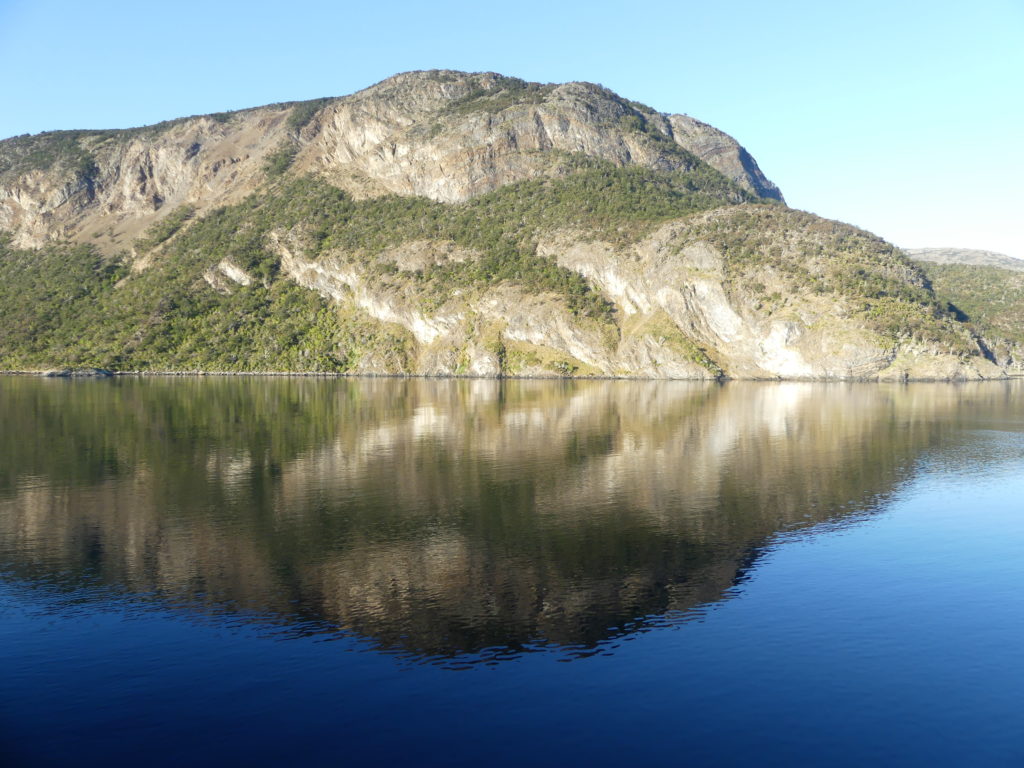
Winds, waves, storms, fog – these are the norm where land reaches its southernmost point in Patagonia. But we fortunately enjoyed some unusual sunlit days. Even our boat crew flocked on deck to snap pictures. Here are some of the remarkable glimpses of nature from the Straits of Magellan and Beagle Channel, sights viewable only by sailing these waters.
Snow-caps and glacial lake from the summit of an island hike
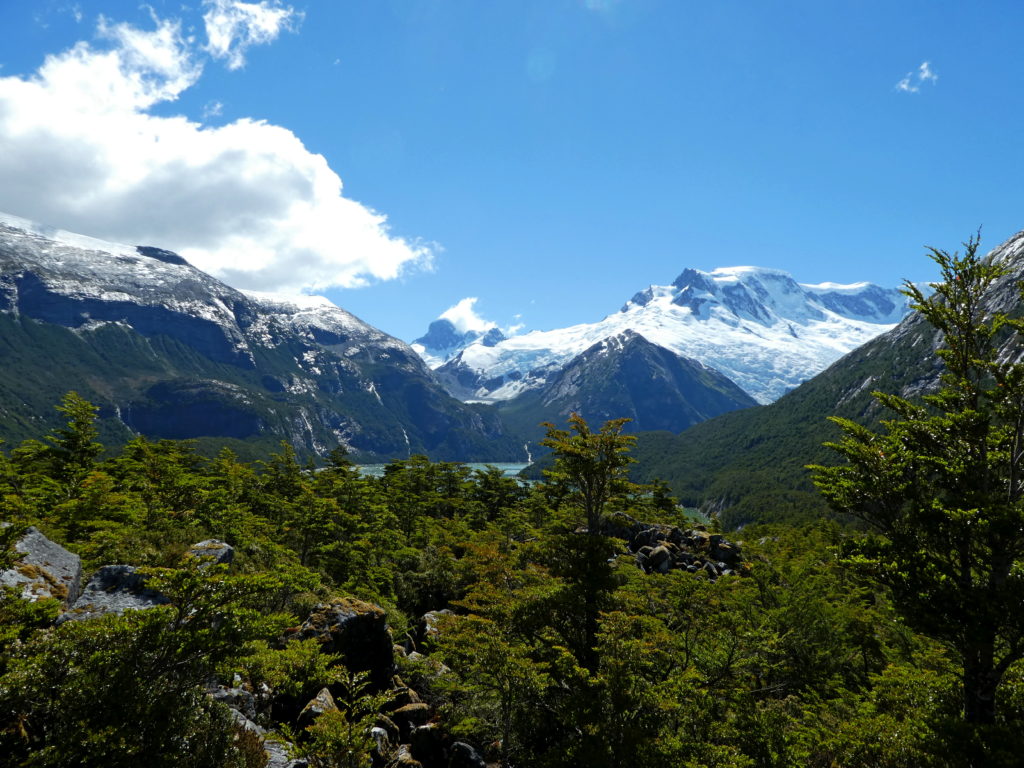
A sinuous peninsula reaches out from an island we hiked, on a darkening day. The landscape around the island has been altered in such ways by the dams of a burgeoning beaver colony. In the 19th century, beavers were introduced here so that their valuable fur could be a source of income. The scheme didn’t work.
First, with no natural enemies, the population grew uncontrollably and altered the waterways irreparably. Even worse, the beavers adapted to the different environment by evolving a different fur, useless for good quality outerwear.
Panorama of the Pia Glacier and bay from atop its adjacent island

Looking back at the Pia Glacier and its dramatically hewn mountainside to the right. This was the first of a half-dozen glaciers we passed that comprise Glacier Alley, which was gorgeously sunlit that day.
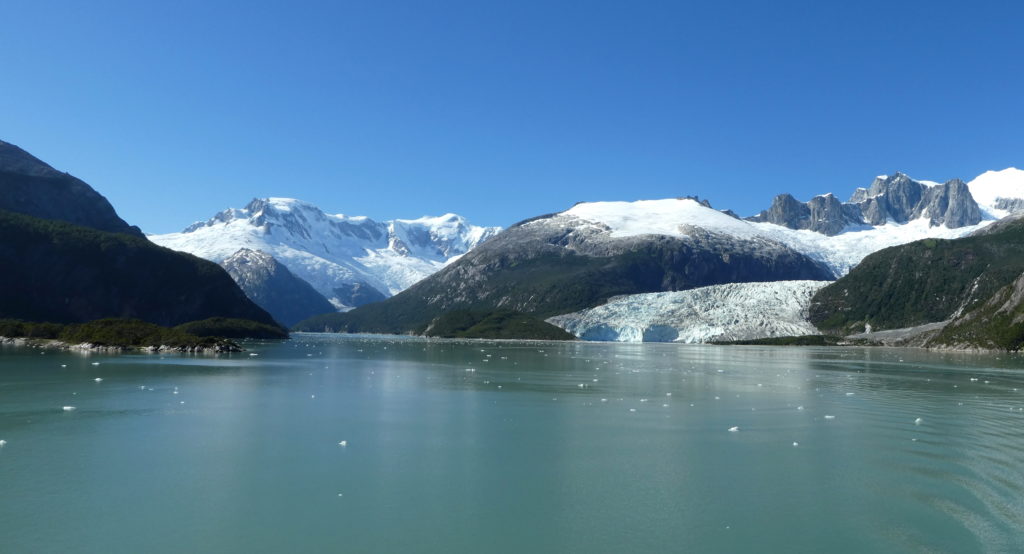
Another glacier in Glacier Alley, where outflow from the raging waterfall tints the blue fjord waters.
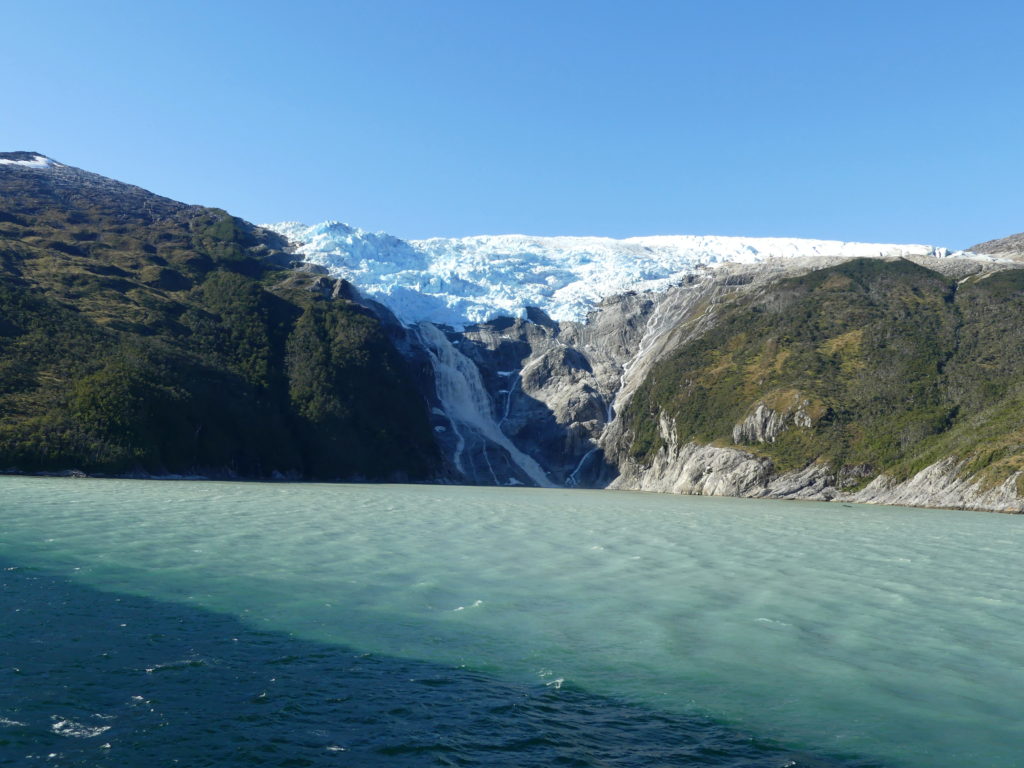
The evening sun within the Beagle Channel, named in honor of Darwin’s passage through here and his work on evolution.
After this, at the end of our last island hike during the trip through the Channel, we reached an impossibly beautiful view. This is a place that Darwin himself had visited some 150 years earlier during his historic voyages.
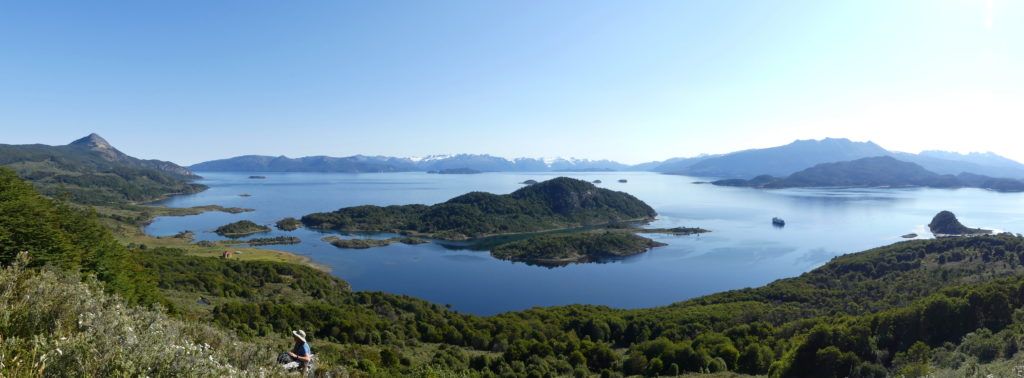
At our polyglot table of Swiss, Belgians, Dutch and Americans – with Chilean/Argentinian wine to loosen our tongues, and extend our stay during dinner. Buen provecho!
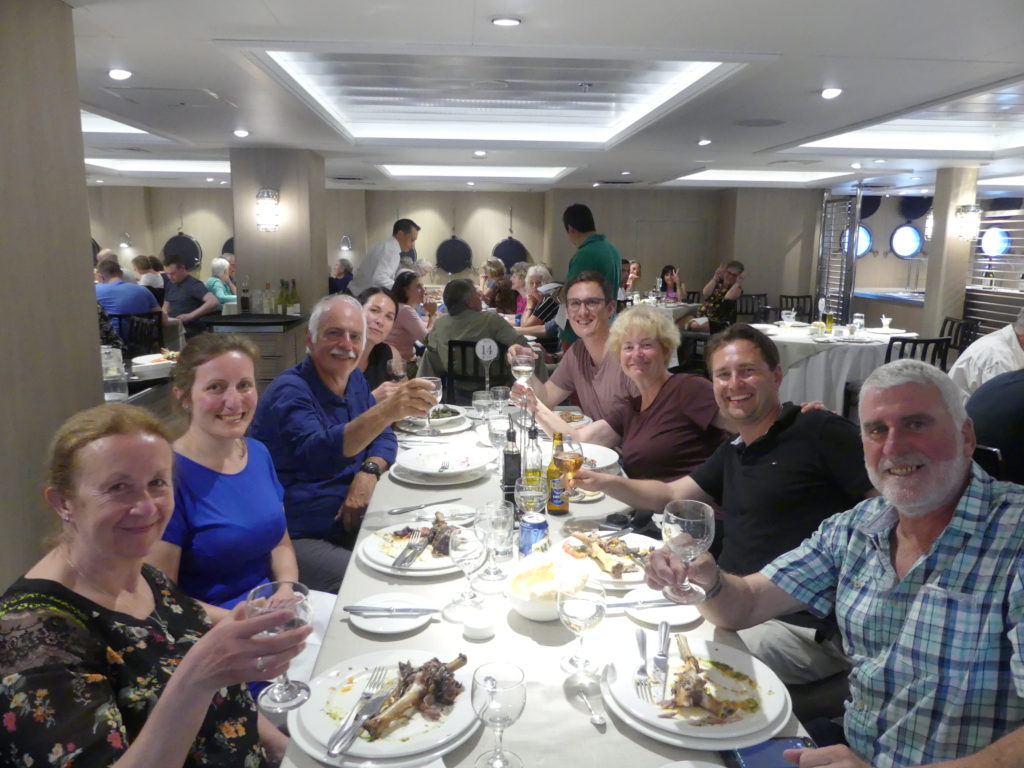
WILDLIFE
Though the landscape is extraordinary, the wildlife is just as good a reason to tour these waters. We did see some dolphins and whales in the distance, but they weren’t nearly as delightful – or close – as these charming critters.
Imperial shags or cormorants, lots of them, atop an island’s mound
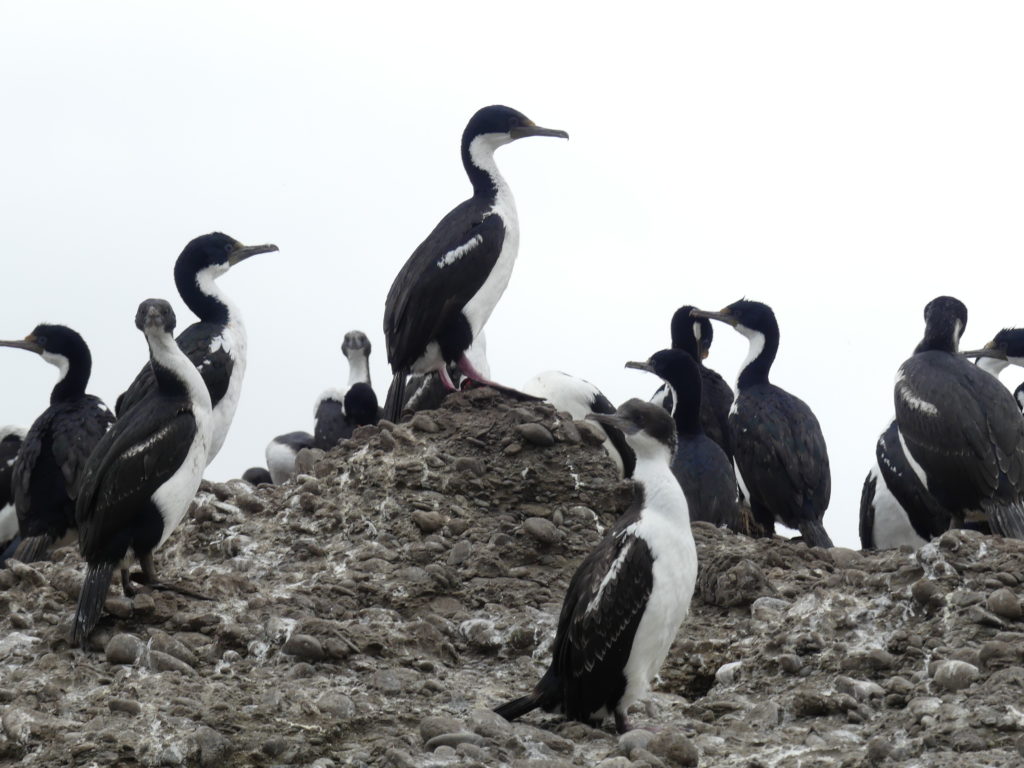
Imperial shag with its knobby beak and gleaming chest
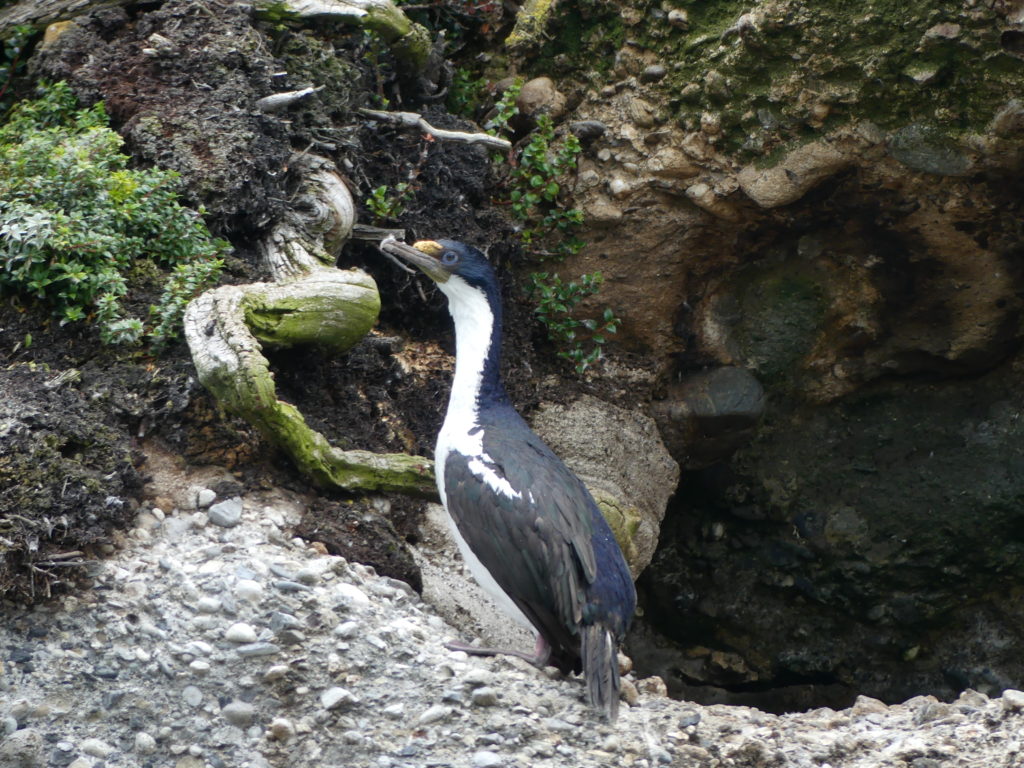
A (very large) Magellanic woodpecker. The male, with its bright red head, was near, but too camera-shy.
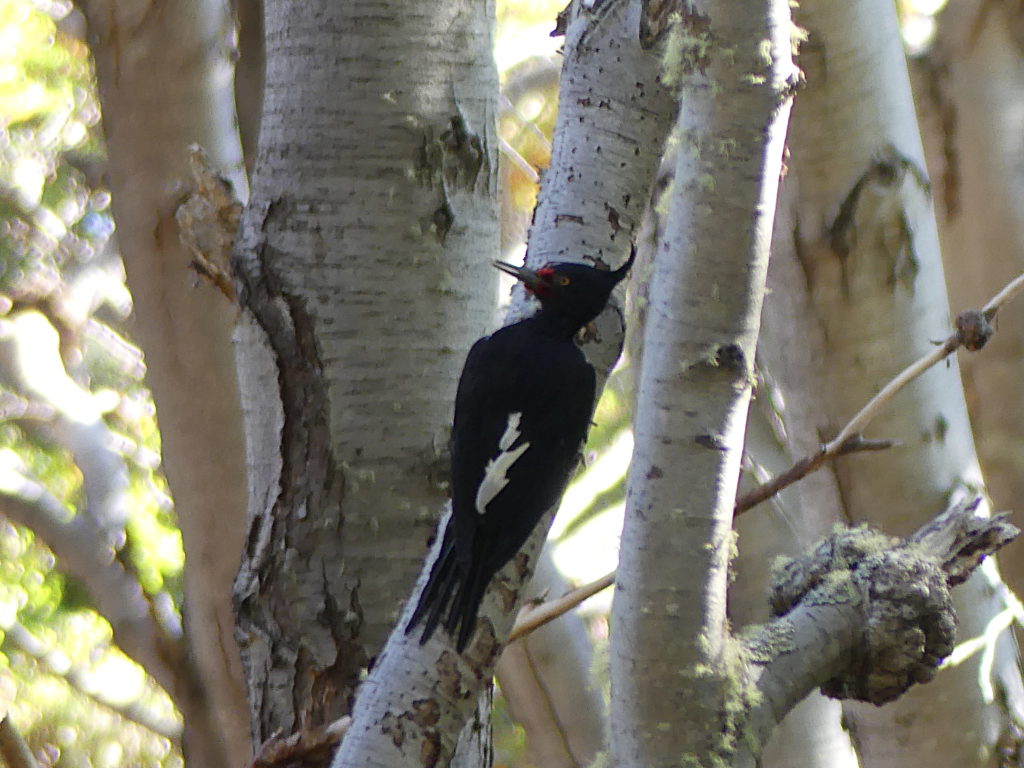
Flightless steamer duck in its icy realm
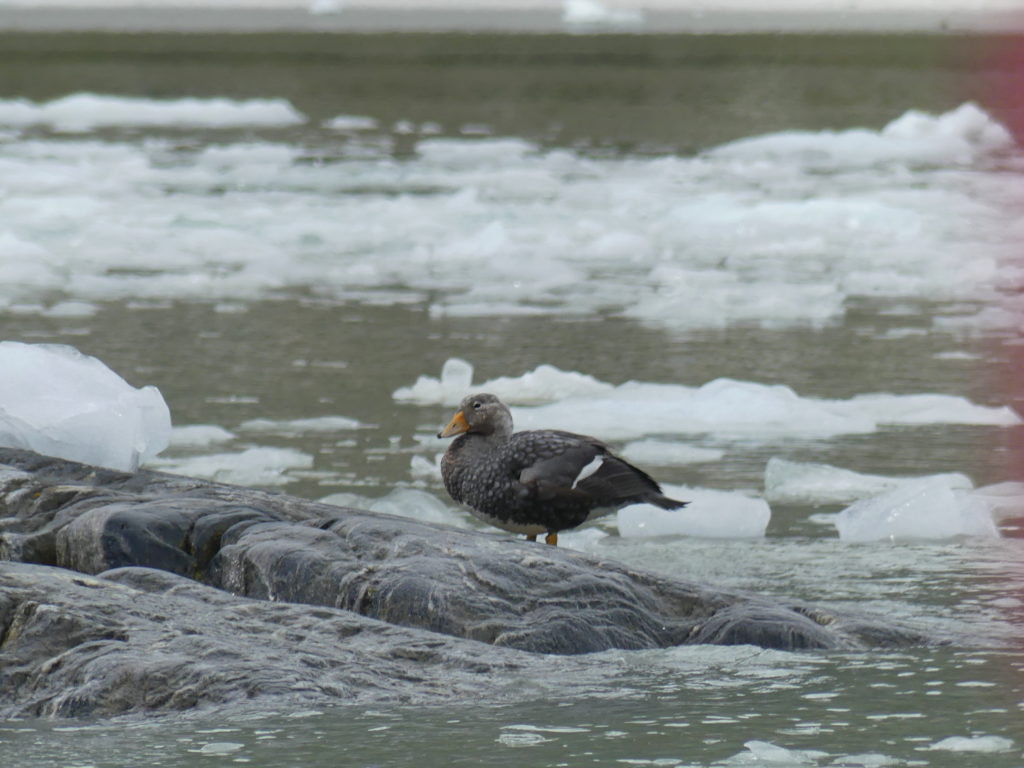
Magellanic penguins, lots of them. They were still on shore as the babies (a few of whom you can see in the background) grew to be self-sufficient.
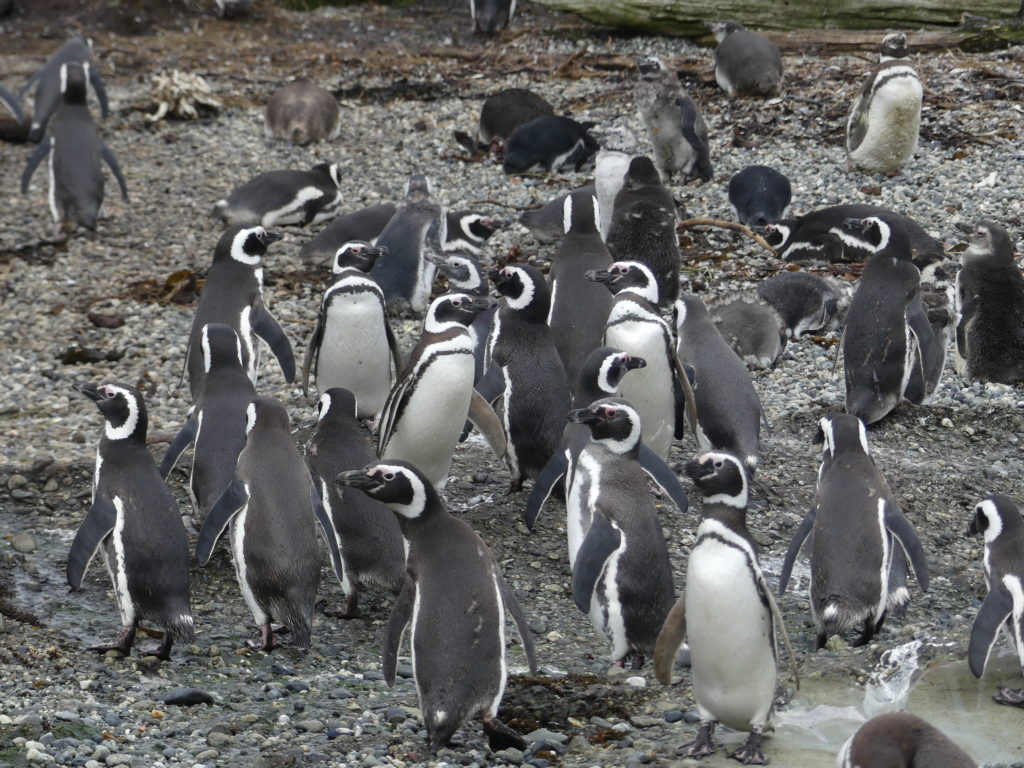
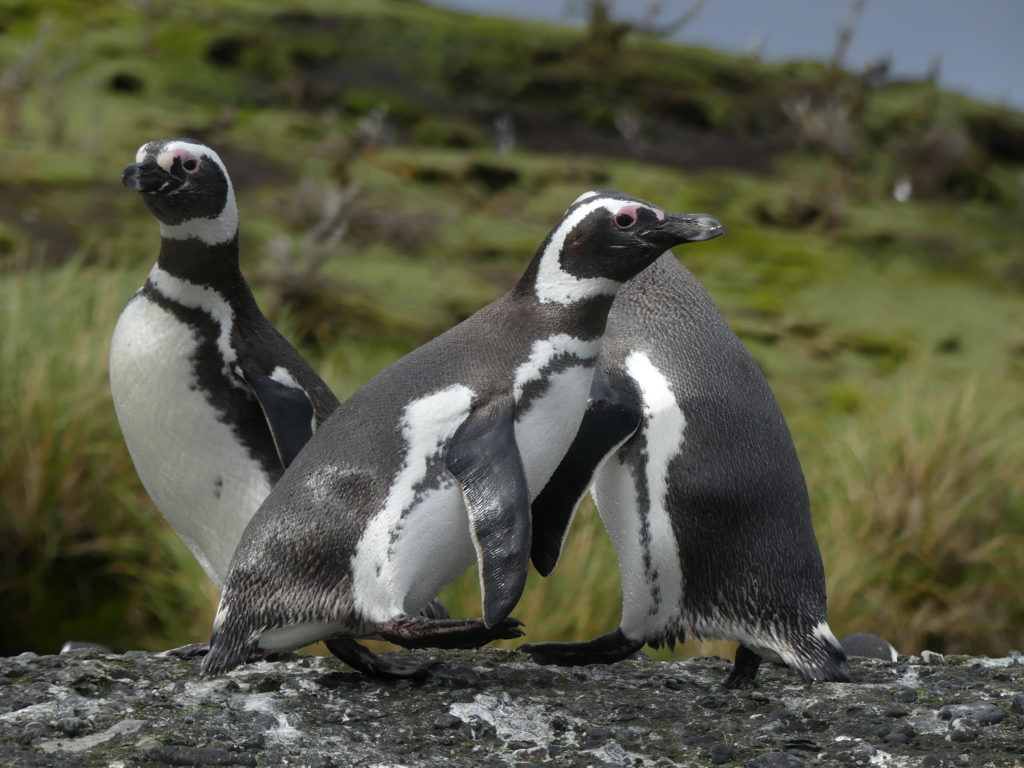
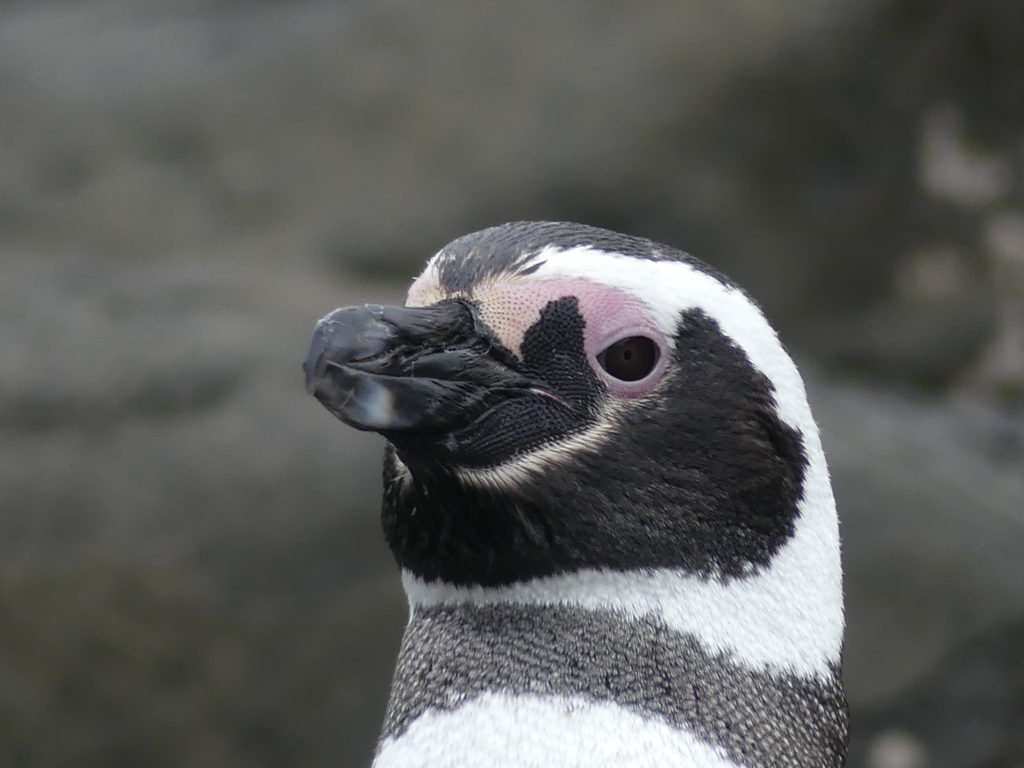
A pair of rock cormorants or shags at the nest, their red eyes watching us with care. Others were tending young ones or just happy to be together. At a distance, people confuse them with the Magellanic penguins.
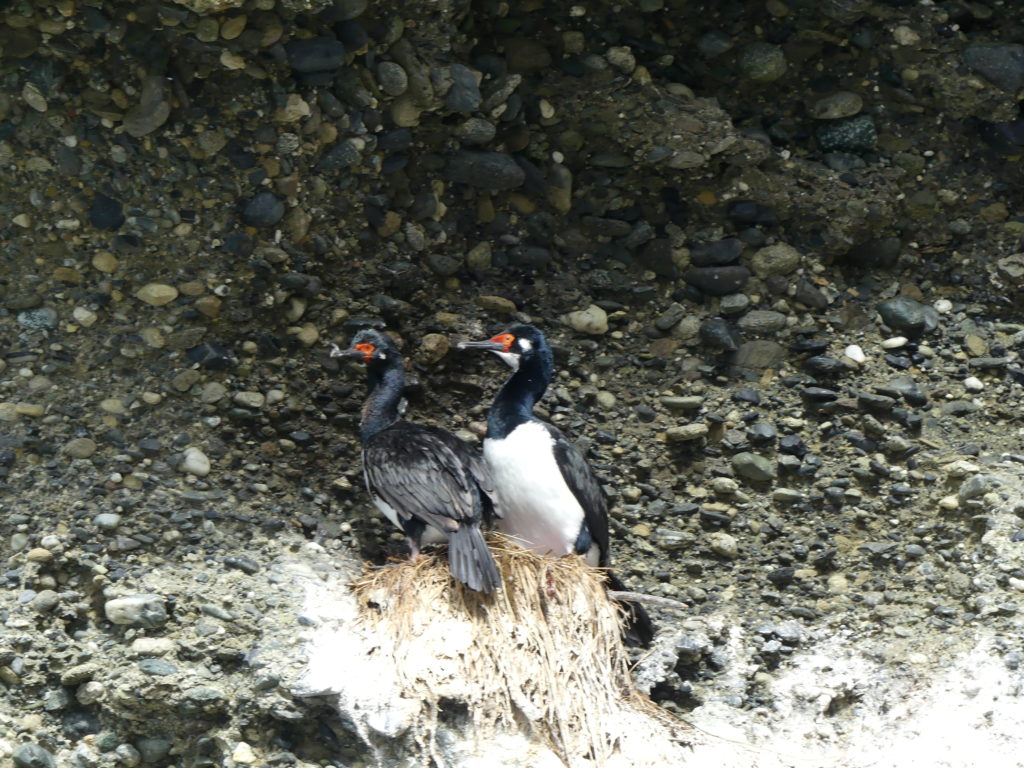
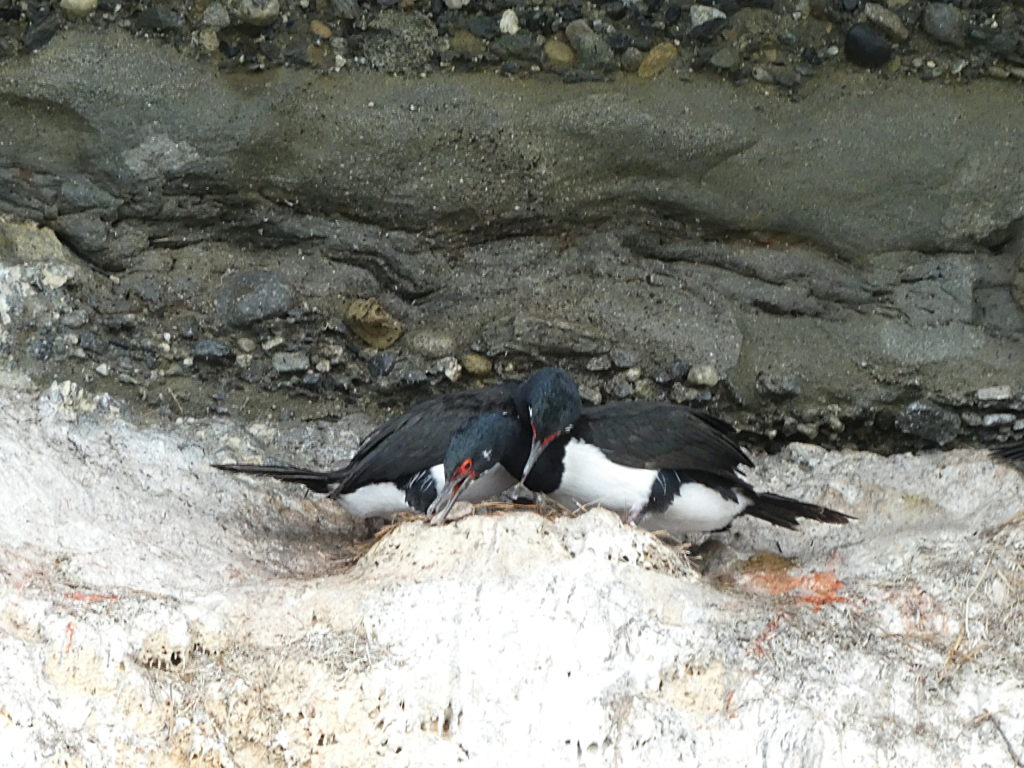
A pair of kelp geese, who eat only…yup, kelp or sea weed. The male is the all-white one. In the back is their guardian penguin.
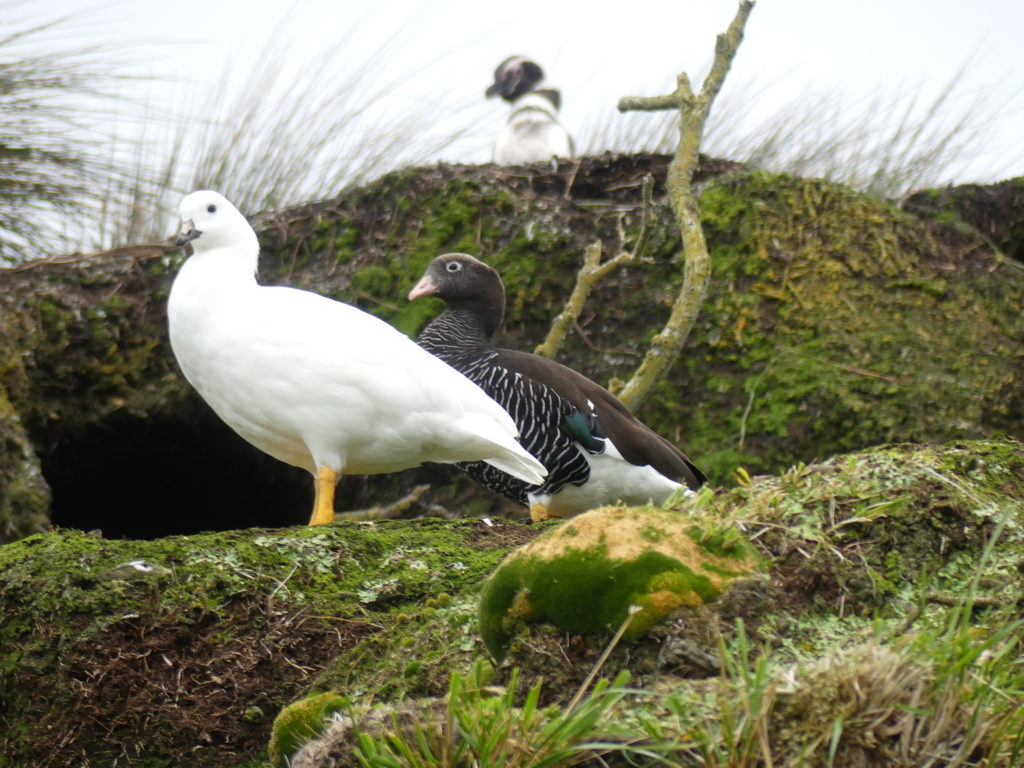
CAPE HORN
“We might not be able to land,” the captain of the fjord ship told us about our planned visit to the island known as Cape Horn. “The weather can be too rough.” That was some understatement. This is the place where the Atlantic and Pacific Oceans meet, part of the infamous Drake Passage. Cape Horn had been the quickest, but the most dangerous, method of crossing between the seas until the Panama Canal opened in 1914.
Shadowy selfie at the end of the world, looking at the meeting point of the Oceans – and unusually calm waters.
Before the Panama Canal, innumerable sailors had died in the turbulent and wind-whipped waters. But the sea was tranquil the day we arrived.
Alongside tributes from several countries, we paid homage to those who died rounding the horn.
We stood silent in the tiny, rough-hewn log chapel – Stella Maris, Star of the Sea – that honored the tempestuous history of this bit of land. The Bible was open to Psalm 89, with its apt line: “Thou rulest the raging of the sea: when the waves thereof arise, thou stillest them.”
We climbed the lighthouse that still protects the adventurous who cross these seas, a beacon overseen by a lone naval officer.
And we meditated at the famous, though now a bit weather-beaten, memorial to the sailors who lost their lives rounding the Horn.
The open space is in the form of an albatross, a bird of fortune for seamen. The bird connects the two metal sides, representing the two wavy oceans.
A poem on a marble slab below it completes the thought, with a tribute in words to the people who faced these dangerous waters.
Soy el albatros que te espera
En el final del mundo.
Soy el alma olvidada de los marinos muertos
Que cruzaron el Cabo de Hornos
Desde todos los mares de la tierra.
Pero ellos no murieron
En las furiosas olas,
Hoy vuelan en mis alas,
Hacia la eternidad,
En la última grieta
De los vientos antárticos.
– Sara Vial, 1992
I am the albatross who awaits you
At the end of the world.
I am the forgotten spirit of the dead seamen
Who crossed Cape Horn
From all earth’s seas.
But they did not die
In the wild waves,
Today they fly on my wings,
Towards eternity,
In the last crack
Of the Antarctic winds.
The whole island of Cape Horn looking past the albatross memorial towards the Drake Passage and Antarctica.
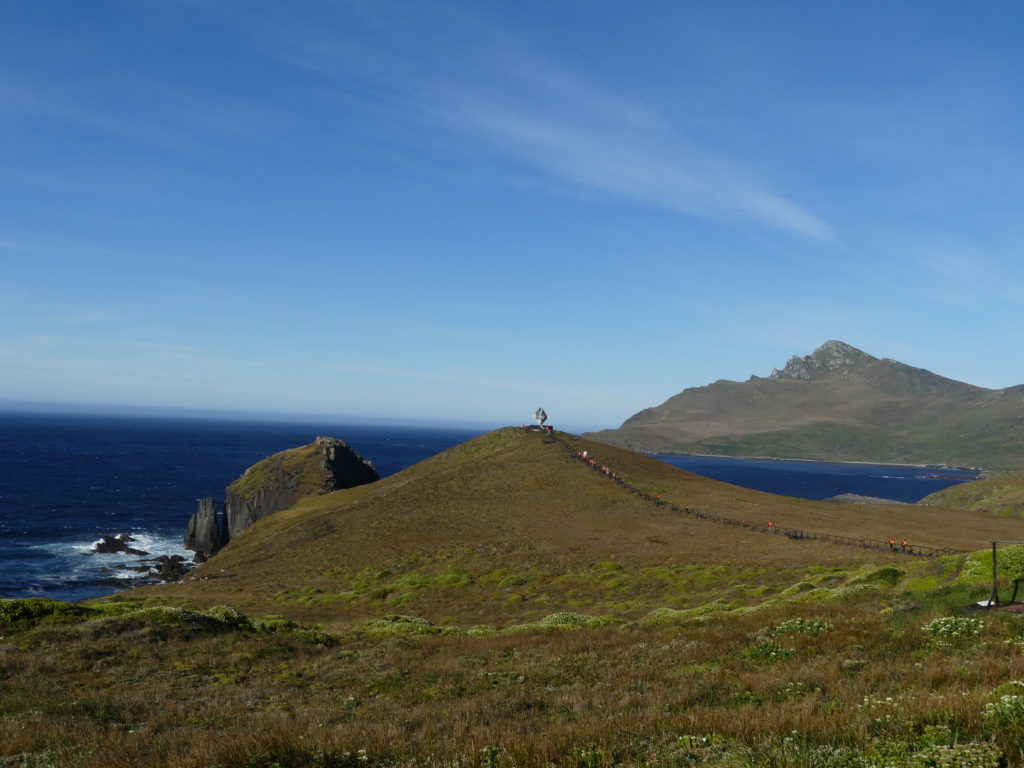
(To enlarge any picture above, click on it. Also, for more pictures from Argentina, CLICK HERE to view the slideshow at the end of the itinerary page.)



